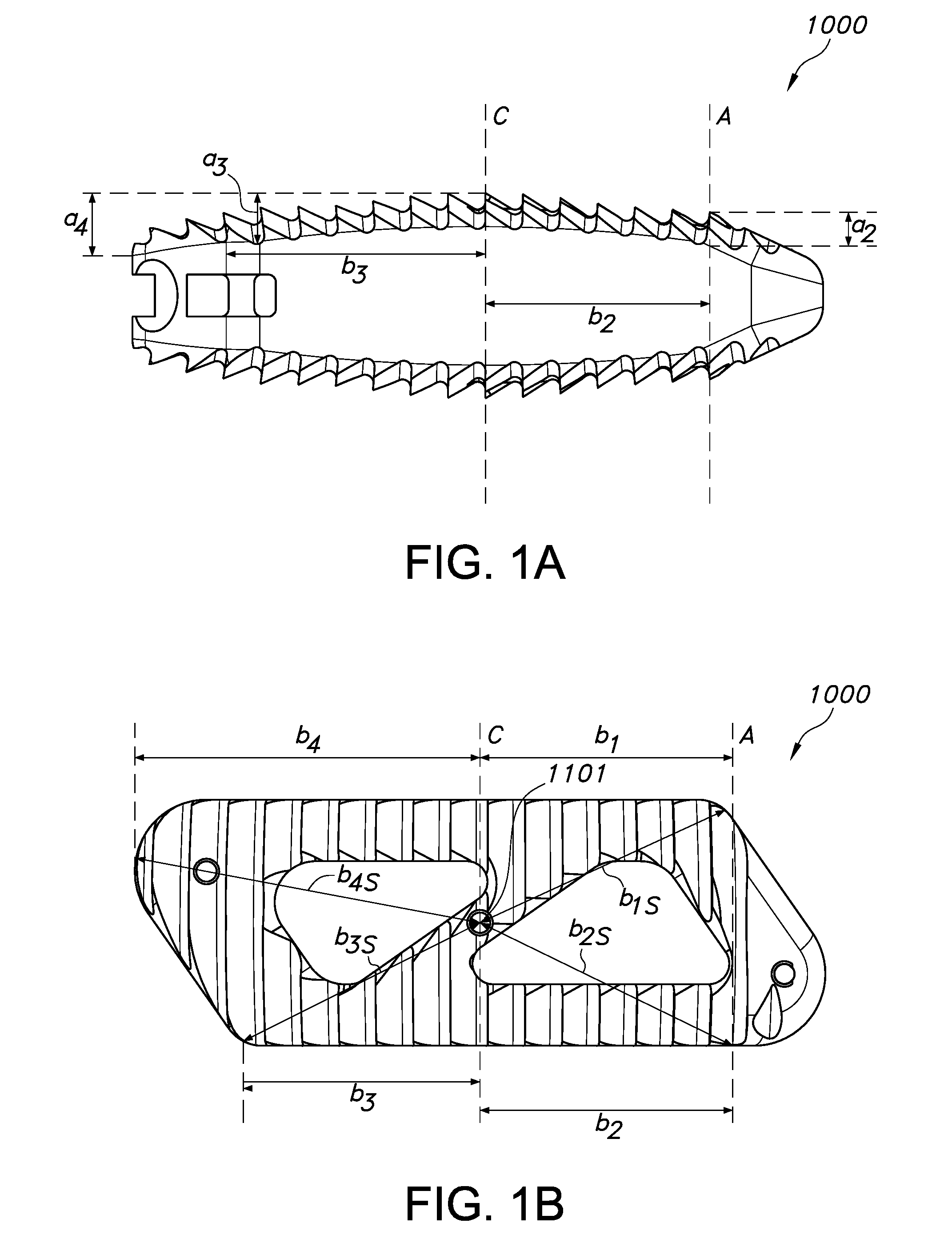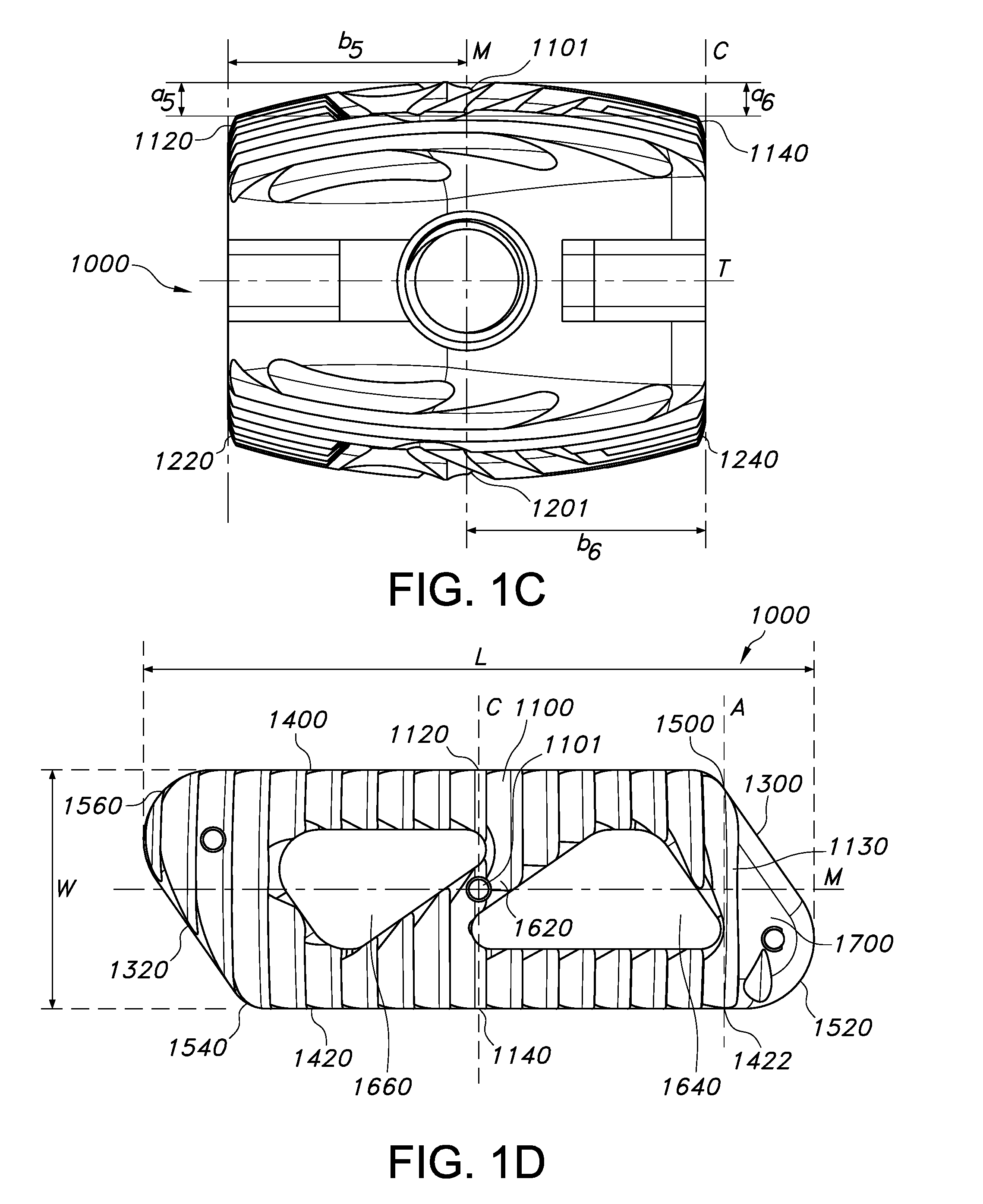Spinal fusion implant for oblique insertion
a spinal fusion and implant technology, applied in the field of spinal fusion implants for oblique insertion, can solve problems such as poor fixation
- Summary
- Abstract
- Description
- Claims
- Application Information
AI Technical Summary
Benefits of technology
Problems solved by technology
Method used
Image
Examples
example
Example 1
Correction of Lordotic Angle in Patients Using Implants Described Above
[0208]Three patients with lumbar pathology received the offset bi-convex implant. They were operated on to restore the natural lumbar lordosis and disc heights. The offset bi-convex implants were positioned in between two adjacent vertebrae at the site of pathology according to the method described above.
[0209]Patient 1 had a pre-operative lordotic angle measurement from L4-S1 of 11°, which was corrected and measured 16° following the operation. Patients 2 and 3 had operative lordotic angle measurements from L4-L5 of 5°, which were corrected and measured 7° following the operation.
PUM
 Login to View More
Login to View More Abstract
Description
Claims
Application Information
 Login to View More
Login to View More - R&D
- Intellectual Property
- Life Sciences
- Materials
- Tech Scout
- Unparalleled Data Quality
- Higher Quality Content
- 60% Fewer Hallucinations
Browse by: Latest US Patents, China's latest patents, Technical Efficacy Thesaurus, Application Domain, Technology Topic, Popular Technical Reports.
© 2025 PatSnap. All rights reserved.Legal|Privacy policy|Modern Slavery Act Transparency Statement|Sitemap|About US| Contact US: help@patsnap.com



